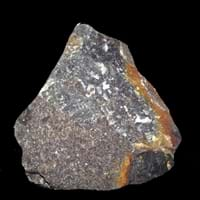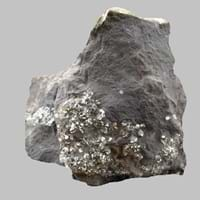Definition
Dolomite is a sedimentary rock containing more than 50 percent of the mineral dolomite by weight
Argillites are highly compact sedimentary or slightly metamorphosed rocks that consist largely or wholly of particles of clay or silt but lack the fissility of shale or the cleavage characteristic of slate
Origin
Southern Alps, France
Unknown
Discoverer
Dolomieu
Unknown
Etymology
From French, from the name of Dolomieu (1750–1801), the French geologist who discovered the rock
From Latin Argilla (clay) and -ite in English which became agrilla+ -ite = Argillite
Class
Sedimentary Rocks
Sedimentary Rocks
Sub-Class
Durable Rock, Medium Hardness Rock
Durable Rock, Soft Rock
Group
Not Applicable
Not Applicable
Other Categories
Coarse Grained Rock, Fine Grained Rock, Medium Grained Rock, Opaque Rock
Fine Grained Rock, Opaque Rock
Texture
Earthy
Clastic, Polished
Color
Black, Brown, Colourless, Green, Grey, Pink, White
Dark Grey to Black, Pink, Red, White
Durability
Durable
Durable
Scratch Resistant
Yes
Yes
Appearance
Glassy or Pearly
Rough and Dull
Interior Uses
Decorative Aggregates, Homes, Interior Decoration
Decorative Aggregates, Homes, Interior Decoration
Exterior Uses
Garden Decoration, Office Buildings
As Building Stone, Garden Decoration, Office Buildings
Other Architectural Uses
Not Yet Used
Curbing, Whetstones
Construction Industry
As a Flux in the Production of Steel and Pig Iron, As a Sintering Agent in Steel Industry to process Iron Ore, As Dimension Stone, Cement Manufacture, for Road Aggregate, Making natural cement, Manufacture of Magnesium and Dolomite Refractories, Production of Glass and Ceramics, Serves as an Oil and Gas Reservoir rock
Used for flooring, stair treads, borders and window sills.
Medical Industry
Taken as a Supplement for Calcium or Magnesium
Not Yet Used
Antiquity Uses
Artifacts, Jewellery, Monuments, Sculpture, Small Figurines
Artifacts, Monuments, Sculpture
Commercial Uses
An Oil and Gas Reservoir, As a Feed Additive for Livestock, Gemstone, Metallurgical Flux, Production of Lime, Soil Conditioner, Source of Magnesia (MgO)
Fire resistant, Used to manufracture paperweights and bookends
Types
Boninite and Jasperoid
Not Available
Features
Host Rock for Lead, Traps for subsurface fluids like Oil and Natural Gas., Zinc and Copper Deposits
Is one of the oldest rock
Archaeological Significance
Famous Monuments
Data Not Available
Data Not Available
Famous Sculptures
Data Not Available
Data Not Available
Formation
Dolomite rocks are originally deposited as calcite or aragonite rich limestone, but during diagenesis process, the calcite or aragonite is transformed into dolomite.
An argillite is a fine-grained sedimentary rock mainly composed of clay particles which forms from lithified muds which contain variable amounts of silt-sized particles.
Mineral Content
Clay Minerals, Pyrite, Quartz, Sulfides
Biotite, Chlorite, Feldspar, Micas, Muscovite or Illite, Plagioclase, Pyrite, Quartz
Compound Content
NaCl, CaO, Carbon Dioxide, Magnesium Carbonate, MgO
Iron(III) Oxide, Potassium Oxide, MgO, Silicon Dioxide
Types of Metamorphism
Burial Metamorphism, Cataclastic Metamorphism, Contact Metamorphism
Not Applicable
Types of Weathering
Not Applicable
Biological Weathering
Types of Erosion
Not Applicable
Chemical Erosion
Grain Size
Medium to Fine Coarse Grained
Fine Grained
Fracture
Conchoidal
Conchoidal to Uneven
Streak
White
White to Grey
Porosity
Less Porous
Highly Porous
Luster
Vitreous and Pearly
Waxy and Dull
Compressive Strength
Not Available
Specific Gravity
2.8-3
2.56-2.68
Transparency
Transparent to Translucent
Opaque
Density
2.8-2.9 g/cm3
2.54-2.66 g/cm3
Resistance
Heat Resistant, Pressure Resistant, Wear Resistant
Heat Resistant, Impact Resistant
Deposits in Eastern Continents
Asia
China, India
Bangladesh, China, India, Russia
Africa
Morocco, Namibia
Ethiopia, Kenya, Morocco, South Africa, Tanzania
Europe
Austria, Italy, Romania, Spain, Switzerland
Austria, France, Germany, Greece, Italy, Romania, Scotland, Spain, Switzerland
Others
Not Yet Found
Not Yet Found
Deposits in Western Continents
North America
Mexico, USA
USA
South America
Brazil, Colombia
Bolivia, Chile, Colombia, Ecuador, Peru, Venezuela
Deposits in Oceania Continent
Australia
New South Wales, Queensland, Yorke Peninsula
New South Wales, New Zealand, Queensland, Victoria, Western Australia
Dolomite vs Argillite Characteristics
Though some rocks look identical, they have certain characteristics which distinguish them from others. Characteristics of rocks include texture, appearance, color, fracture, streak, hardness etc. Dolomite vs Argillite characteristics assist us to distinguish and recognize rocks. Also you can check about Properties of Dolomite and Properties of Argillite. Learn more about Dolomite vs Argillite in the next section. The interior uses of Dolomite include Decorative aggregates, Homes and Interior decoration whereas the interior uses of Argillite include Decorative aggregates, Homes and Interior decoration. Due to some exceptional properties of Dolomite and Argillite, they have various applications in construction industry. The uses of Dolomite in construction industry include As a flux in the production of steel and pig iron, As a sintering agent in steel industry to process iron ore, As dimension stone, Cement manufacture, For road aggregate, Making natural cement, Manufacture of magnesium and dolomite refractories, Production of glass and ceramics, Serves as an oil and gas reservoir rock and that of Argillite include Used for flooring, stair treads, borders and window sills..
More about Dolomite and Argillite
Here you can know more about Dolomite and Argillite. The life cycle of a rock consists of formation of rock, composition of rock and transformation of rock. The composition of Dolomite and Argillite consists of mineral content and compound content. The mineral content of Dolomite includes Clay Minerals, Pyrite, Quartz, Sulfides and mineral content of Argillite includes Biotite, Chlorite, Feldspar, Micas, Muscovite or Illite, Plagioclase, Pyrite, Quartz. You can also check out the list of all Sedimentary Rocks. When we have to compare Dolomite vs Argillite, the texture, color and appearance plays an important role in determining the type of rock. Dolomite is available in black, brown, colourless, green, grey, pink, white colors whereas, Argillite is available in dark grey to black, pink, red, white colors. Appearance of Dolomite is Glassy or Pearly and that of Argillite is Rough and Dull. Properties of rock is another aspect for Dolomite vs Argillite. The hardness of Dolomite is 3.5-4 and that of Argillite is 2-3. The types of Dolomite are Boninite and Jasperoid whereas types of Argillite are Not Available. Streak of rock is the color of powder produced when it is dragged across an unweathered surface. The streak of Dolomite is white while that of Argillite is white to grey. The specific heat capacity of Dolomite is 0.92 kJ/Kg K and that of Argillite is 0.87 kJ/Kg K. Depending on the properties like hardness, toughness, specific heat capacity, porosity etc., rocks are resistant to heat, wear, impact, etc.Dolomite is heat resistant, pressure resistant, wear resistant whereas Argillite is heat resistant, impact resistant.





